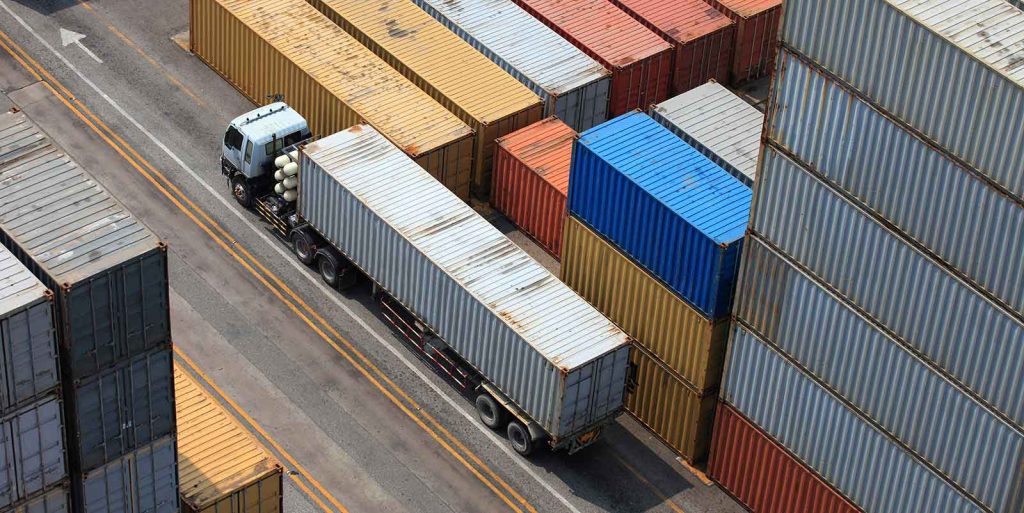The need for digitization in logistics among 3PL’s has increased tremendously over the last few years. Stronger competition from innovative web portals and higher demands in the market makes it difficult for the traditional 3PL´s and their subcontractors.
Due to the rise of e-commerce, the B2C segment is driving high customer expectations. In the B2B environment, as well, customers in all parts of the world are now increasingly voicing demands in terms of levels of service and the flexibility of logistics services. Both individuals and businesses expect to get goods faster, with more control and visibility. Digitalization plays an important part in addressing and overcoming these challenges.
But where to start? If you think going digital will be a big IT project which requires a lot of resources- then think again!
Connecting systems
You don’t have to replace your existing systems. Utilize the ones you already have.
As a 3PL operator today, you probably have ERP, TMS, and WMS in use. Each of these systems provides your company with valuable information. But they could be providing you with even more value if they were connected. You would have full visibility and an overview of your operations. It would also make it easier to meet your customers’ expectations.
You should utilize cloud services to catch relevant data from all the different sources. All systems can talk to one another in the cloud, allowing for easier transactions such as uploading orders or checking order status, booking, or downloading invoices.
Typically, logistics service providers build their IT infrastructure using different interface formats to create data connections with different partners. As the number of partners rises, so does the complexity of connecting them all. The cloud simplifies the process of integrating supply chain data with multiple standards, formats and communications channels. You only have to connect once – no longer do LSPs need to build new interfaces again and again – everything is housed on a single platform.
Data-sharing has become crucial for supply chains and here is a list of the improvements that can be expected:
- Strong control over your own operation
- Planning of actual transport/pick-ups/planning of loads /sizes of trucks much earlier
- Provide your customers with up-to-the-minute valuable data of how your transport proceeds, informing about ETA (estimated time of arrival) and POD (proof-of-delivery)
- Control of incoming trucks, warehousing, or cross-docking and outgoing trucks connected.
- A Sign-on-glass mobile solution secures a much quicker invoicing and control
- You will finally get control of all your partners that makes deliveries for you when your own fleet is not enough
- Your customer (the shipper) and the final consignee can follow as well if wanted
Calculations for planning, dispatch, and routing
Cost-reduction, increased efficiency, and competitiveness are constant challenges to a 3PL operator. Digital logistics can help meet these challenges. Using cloud-based solutions makes sure that the calculations and analysis data, gained from your own existing systems, easily can compete with your existing planning systems. This can bring your fleet management into another league.
Here are just some of the advantages you can expect from boosting the data you already have through cloud technology:
- Customer booking systems
- Total driver’s management (internal and external). Carrier mobility
- Pick-up management (both scheduled and spot)
- Fleet management and multi-hub operation
- Planning/route process – up to 30% reduction in cost.
- Up to 5 % per year in the reduction of total km covered with your fleet.
- Event notification in real-time. Customized notification
- Geo-tracking and tachometer data etc.
- Reverse logistics systems.
Imagine what this could do for your business performance and cost base!
Efficient cross-docking
Do you want to know how to speed up your processes in the warehouse by using your existing organizational resources?
It is time to think outside the box and allow digitalization to do the heavy calculations (and planning) for you. By using algorithms and prepare properly in cooperation with your customers, you will be able to gain a new competitive level:
- 135 % increase in speed through your warehouse (for cross-docking)
- Inbound – your WMS – outbound planning integrated data
- Storage management – manage and track temporary storage
- Delete the need for external contractors
- Monitoring of shop-floor processes
- Increase filling rates by sharing data
- Cargo consolidation and reconstruction automatically planned
Conclusion
Driven by the pressures of competition, cost-reduction, and performance, digitalization is set to transform the logistics industry – with technology and innovative cloud services playing a key role. For many companies, however, digitally optimizing operations has not been a strategic priority so far. It most certainly ought to be in 2020. Digitalizing your logistics operation creates great opportunities for new business concepts, revenue generation, and improved efficiency. Plus, it helps you shrink your environmental impact and creates a resilient supply chain.
In an increasingly real-time economy, companies that take a structured and disciplined approach to digital adoption will have a competitive advantage in the challenging freight transport and logistics marketplace
Start your journey towards digitalization today, and you’ll be well on your way to digital leadership.

